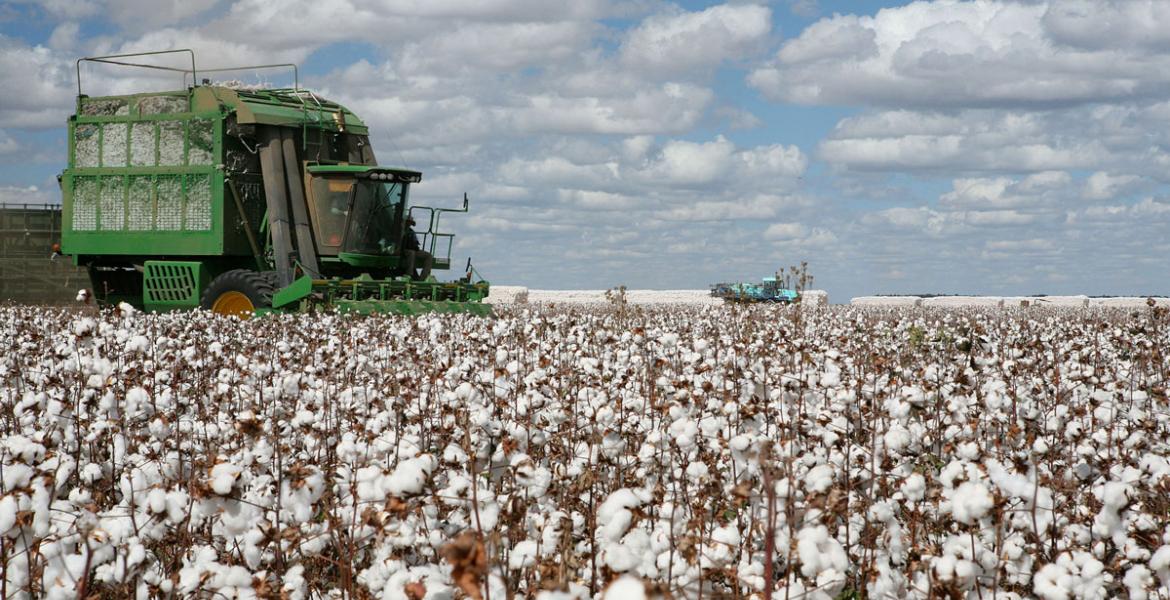A recent decision to list the prairie chicken as an endangered species has caused some uproar among politicians, who have spoken out against the U.S. Fish and Wildlife Services' decision.
Congressman Mike Conaway and Texas Railroad Commissioner David Porter have released the following statements, expresssing discontent at the endangered listing.
WASHINGTON, D.C. – Congressman K. Michael Conaway (R-Texas) issued the followed statement regarding the U.S. Fish and Wildlife Services decision to list the Lesser Prairie Chicken as threatened:
“I am disappointed in the U.S. Fish and Wildlife Service. Director Ashe had the opportunity to build a new model of cooperative conservation and he failed. The purpose of the range wide plan was to preclude a listing. It was to show that a voluntary, stakeholder process could preserve the Lesser Prairie Chicken. Stakeholders deserved the opportunity to see if their efforts would be successful. The Western Association of Fish and Wildlife Agencies, the oil and gas industry, and farmers and ranchers did an incredible job of putting together a Range-Wide Conservation Plan, only to have Director Ashe disregard the potential of voluntary efforts to preserve the Lesser Prairie Chicken. As of March 21, 2014, nearly 4 million acres of land had been enrolled in the plan and more than $26 million in non-federal money had been committed. Today’s decision to list the Lesser Prairie Chicken as threatened certainly does not encourage an atmosphere of trust and cooperation.”
AUSTIN - The following statement can be attributed to Texas Railroad Commissioner David Porter on the U.S. Fish and Wildlife Service’s decision to list the Lesser Prairie Chicken as threatened under the Endangered Species Act.
“I am extremely disappointed in the U.S. Fish and Wildlife Service’s (USFWS) decision to list the Lesser Prairie Chicken as threatened under the Endangered Species Act. It appears the federal agency has been influenced heavily by the environmentalist agenda, which has very little to do with preservation of this species and more with the eradication of the oil and gas industry. Unfortunately, this is another prime example of how the Endangered Species Act is seldom used for its intended purposes, but is being used as a political tool in the Obama administration’s war on fossil fuels.
While the USFWS did include a special rule that will hopefully limit the regulatory impacts on oil and gas activity, I believe it still has the potential to be incredibly detrimental to energy production. As Texas Railroad Commissioner, I vow to continue to fight federal intervention in our state, the number one energy producing state in the nation."
Fish and Wildlife Services
Below is a press release from the Fish and Wildlife Services, issued on March 27.
In response to the rapid and severe decline of the lesser prairie-chicken, the U.S. Fish and Wildlife Service today announced the final listing of the species as threatened under the Endangered Species Act (ESA), as well as a final special rule under section 4(d) of the ESA that will limit regulatory impacts on landowners and businesses from this listing. Under the law, a “threatened” listing means the species is likely to become in danger of extinction within the foreseeable future; it is a step below “endangered” under the ESA and allows for more flexibility in how the Act’s protections are implemented.
In recognition of the significant and ongoing efforts of states and landowners to conserve the lesser prairie-chicken, this unprecedented use of a special 4(d) rule will allow the five range states to continue to manage conservation efforts for the species and avoid further regulation of activities such as oil and gas development and utility line maintenance that are covered under the Western Association of Fish and Wildlife Agencies’ (WAFWA) range-wide conservation plan. This range-wide conservation plan was developed by state wildlife agency experts in 2013 with input from a wide variety of stakeholders. The special rule also establishes that conservation practices carried out through the USDA’s Natural Resources Conservation Service’s Lesser Prairie-Chicken Initiative and through ongoing normal agricultural practices on existing cultivated land are all in compliance with the ESA and not subject to further regulation.
“The lesser prairie-chicken is in dire straits,” said U.S. Fish and Wildlife Service Director Dan Ashe. “Our determination that it warrants listing as a threatened species with a special rule acknowledges the unprecedented partnership efforts and leadership of the five range states for management of the species. Working through the WAFWA range-wide conservation plan, the states remain in the driver’s seat for managing the species – more than has ever been done before – and participating landowners and developers are not impacted with additional regulatory requirements.”
The service has considered the lesser prairie-chicken, a species of prairie grouse commonly recognized for its colorful spring mating display and stout build, to be a species in trouble for the past 15 years. Its population is in rapid decline, due largely to habitat loss and fragmentation and the ongoing drought in the southern Great Plains. Once abundant across much of the five range states of Texas, New Mexico, Oklahoma, Kansas and Colorado, the lesser prairie-chicken’s historical range of native grasslands and prairies has been reduced by an estimated 84 percent. Last year, the range-wide population declined to a record low of 17,616 birds, an almost 50 percent reduction from the 2012 population estimate. The states’ conservation plan has a population goal of 67,000 birds range-wide.
“To date, we understand that oil and gas companies, ranchers and other landowners have signed up over 3 million acres of land for participation in the states’ range-wide conservation plan and the NRCS’ Lesser Prairie Chicken Initiative,” said Ashe. “We expect these plans to work for business, landowners and the conservation of prairie-chickens.”
In addition to the range-wide conservation plan and the Lesser Prairie Chicken Initiative, a number of other on-the-ground programs have been implemented over the last decade across the bird’s five-state range to conserve and restore its habitat and improve its status. Key programs such as the USDA’s Farm Service Agency’s Conservation Reserve Program, the Bureau of Land Management’s New Mexico Candidate Conservation Agreement, the Service’s Partners for Fish and Wildlife Program and Candidate Conservation Agreements with Assurances in Oklahoma, Texas and New Mexico, are engaging state and federal agencies, landowners and industry in these efforts.
Collectively, these programs – and in particular, the range-wide conservation plan – serve as a comprehensive framework within which conservation of the lesser prairie-chicken can be achieved. The various efforts are similar to a recovery plan, something that the Service normally prepares after a species’ listing. This early identification of a strategy to conserve the lesser prairie-chicken is likely to speed its eventual delisting.
However, threats impacting the species remain and are expected to continue into the future. After reviewing the best available science and on-the-ground conservation efforts focused on the species, the Service determined that the lesser prairie-chicken is likely to become endangered in the foreseeable future and warrants listing as threatened under the ESA. The agency is under a court-ordered deadline to make a listing determination on the species by March 31.
The final rule to list the lesser prairie-chicken as threatened and the final special rule will publish in the Federal Register and will be effective 30 days after publication. Copies of the final rules may be found at the Service’s website at http://www.fws.gov/southwest.
Subscribe to the LIVE! Daily
Required






Comments
Listed By: telemogeezic *
- Log in or register to post comments
PermalinkPost a comment to this article here: